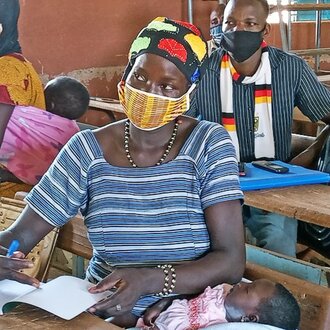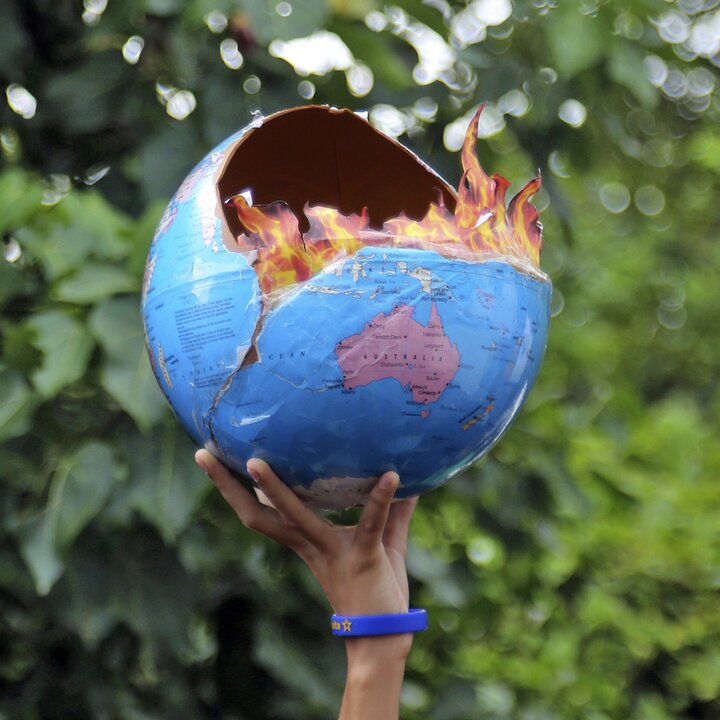A pandemic like COVID-19 or a cyclone like the one currently crossing West Bengal and Bangladesh are shocks. A pandemic is a shock that shows how fragile the global ecosystem has become. Cyclones and other weather hazards are shocks that show how fragile the climate is. Humanity has seen the warning signs for years – but has not been taking them seriously.
Cyclone Amphan is bearing down on India and Bangladesh as I write this blog. Both countries are still dealing with the impacts of COVID-19 when this massive cyclone hits, with winds gusting over 150 km/ hour and the risk of a storm surge as high as 5 to 6 meters. This is one of the most densely populated regions in the world. Over 4 million people have had to be evacuated in the last days to thousands of shelters, where social distancing is virtually impossible.
This has been one of the strangest years of my life when scenarios we knew were scientifically possible are being experienced over a very short period. It’s surreal and one cannot but wonder, is this the new normal?
People have come too close to animals
70% of recent diseases are zoonotic in origin, i.e. transmitted to humans from wild or domestic animals – according to a recent guest article authored by, among others, the co-chairs of the Intergovernmental Science-Policy Platform on Biodiversity and Ecosystem Services (IPBES), a sister body of the Intergovernmental Panel on Climate Change (IPCC, to which I contribute as a lead author). According to the article, most future diseases will be of this nature. Human actions have affected over 75% of the landmass, through deforestation, expansion of agriculture, mining and growing human habitations. This has enhanced the interactions between humans, wildlife and the pathogens they harbor. The scientific community has long been aware of this and warning us of the risk of pandemics.
The impacts of human actions on the ecosystem or climate are experienced as trends and shocks. Trends are patterns observed over time while shocks are sudden extreme events. Both have large impacts, one felt overtime while the others are instant and therefore draw greater attention. The recent IPBES assessment of the state of the world’s ecosystem warned us that over 500,000 species, about 9% of the world’s estimated 5.9 million terrestrial species, have insufficient habitat for their survival. Over a third of the world’s land surface and ¾ of its freshwater resources are used for crop or livestock production. Unsustainable practices have degraded and reduced the productivity of about a quarter of the agricultural land area. These are just a few of the trends in ecosystem loss. Such unsustainable agricultural practices that destroy habitats for millions of species also leave over 10% of the world population hungry. Incidentally the OECD countries subsidize such agriculture, harmful to the environment, to the extent of $100 billion per year.
Humanity pours oil on fire
We have known for decades, from repeated assessments of the state of the climate, that there has been a steady rise in greenhouse gas concentrations and a related rise in average global temperatures since the industrial revolution. We are living through consecutive years of ever rising global mean temperatures and today are facing one of the warmest and driest spring seasons in central Europe. Ironically, according to one estimate, governments in the G20 countries subsidize fossil fuel production, the leading cause of climate change, to the extent of $444 billion each year (2015 data).
Since trends are gradual, we not only behave like the proverbial frog in the pan of gradually warming water but ironically, as a highly evolved and intelligent species, are also adding fuel to the fire warming the pan.
Shocks such as the current pandemic grab our attention. When ecosystems are destroyed, wild species of animals (like bats) come into close contact with humans, domesticated and wild animals, which become a conduit for the transmission of germs to humans. There are about 1.7 million varieties of coronavirus in the wild and 1300 species of bats making for innumerable combinations of future epidemics and pandemics. We need to prevent further destruction of their habitat and learn to share this earth with wild animals. Only by learning from trends can we avoid shocks.
Bleak prospects
In 2012, the IPCC produced a landmark report on the links between climate change and climate shocks or extreme weather events such as heatwaves, floods, cyclonic storms/ hurricanes and wildfires. In the last years we have lived through some of its most grim scenarios with multiple and unexpected hurricanes in East Africa (that have triggered locust swarms), wildfires raging from Siberia to America and Australia, followed by floods of biblical proportions. And now Amphan, the largest ever hurricane in the Bay of Bengal. The oceans have absorbed 93% of global warming over the past decades. Warmer waters lead to stronger, larger and more rapidly intensifying cyclones, which is what we observe with Amphan.
A combination of multiple extreme weather events and protectionist policies of governments triggered the food crisis in 2008 and again in 2010 – 2012. Today we are fortunate that food stocks in most countries are high, the production in the last season was good and food markets are functioning well but still many millions are not able to purchase food due to loss of income. The World Food Programme estimates that the COVID-19 pandemic will lead to more than a quarter billion people experiencing acute hunger by the end of the year.
Right now, trillions of resources are being released worldwide in response to COVID-19. This is a crisis - but also an opportunity. This is a time to listen to nature and deploy the significant resources that have been tapped from the public sector for the COVID-19 response to ecologically sustainable measures. But the signs are deeply worrisome: a recent paper assessing the nature of the economic stimulus packages found only 4% of policies are ‘green’, with potential to reduce long-run GHG emissions, 4% are ‘brown’ and likely to increase net GHG emissions beyond the base case, and 92% are ‘colorless’, meaning that they maintain status quo.
Will the frog ever learn?







